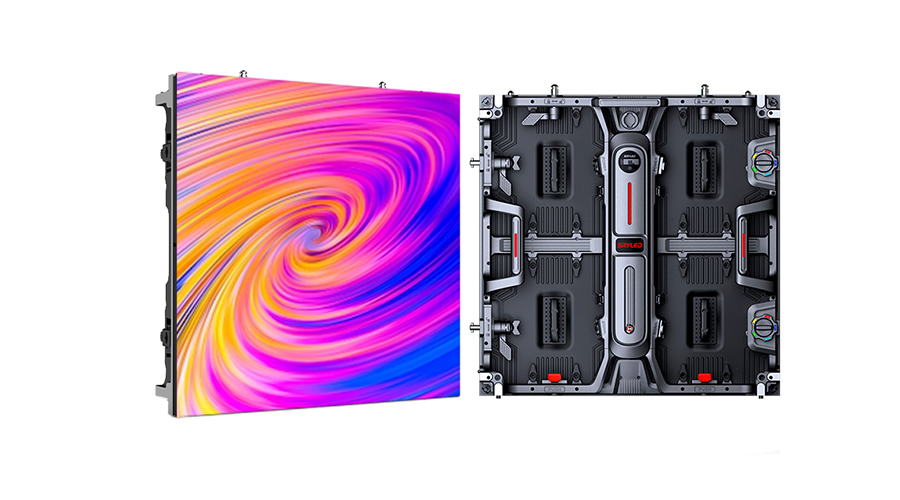From the dynamic backdrop in a television studio to the stunning video wall in a corporate lobby, high-resolution digital canvases are transforming indoor environments. The technology driving this revolution is the Indoor LED Display.
Unlike traditional projectors or LCD video walls, indoor LED screens offer unparalleled brightness, seamless images, and incredible design flexibility. This guide explores what makes these displays the premium choice for creating immersive and unforgettable indoor visual experiences.

What is an Indoor LED Display?
An indoor LED display is a video screen built from a series of individual modules or "cabinets." Each module contains thousands of tiny light-emitting diodes (LEDs). For indoor use, these are typically SMD (Surface-Mounted Device) LEDs, where the red, green, and blue diodes are packaged together into a single tiny pixel. This allows for very high resolutions and excellent color blending.
These modules are designed to connect seamlessly, allowing technicians to build a video wall of virtually any size or shape without the distracting bezels (borders) seen on LCD video walls.
Key Advantages of Indoor LED Technology
Indoor LED displays offer a host of benefits that make them superior to other display technologies in many scenarios.
- Completely Seamless Images: Because they are built from modular panels that fit together perfectly, LED walls create a single, uninterrupted canvas. This is ideal for displaying large, detailed images and videos without distracting black lines.
- Superior Brightness and Contrast: Indoor LED screens are significantly brighter than projectors and can operate flawlessly in well-lit environments like shopping malls and bright lobbies. They also offer deep, true blacks, resulting in a very high contrast ratio and vibrant, punchy colors.
- Design Flexibility: The modular nature allows for creative installations. Screens can be curved (concave or convex), wrapped around corners, or built into custom shapes, giving architects and designers immense creative freedom.
- Long Lifespan and Reliability: Designed for commercial use, indoor LED displays have a very long operational lifespan, often rated for 100,000 hours. They are built for continuous, 24/7 operation and have low maintenance requirements.
Key Features to Understand for Indoor Use
When considering an indoor LED screen, a few technical specifications are crucial.
- Pixel Pitch: This is the distance between the center of one pixel and the center of the next, measured in millimeters. For indoor applications where viewers are close to the screen, a fine pixel pitch is essential. Pitches like P2.5 (2.5mm), P1.9, or even P1.2 are common, delivering crisp, high-resolution images that look like a printed photograph, even from a few feet away.
- Brightness (Nits): Unlike outdoor screens that need to fight the sun, indoor displays require much lower brightness levels to be comfortable for viewers. Typical indoor brightness ranges from 600 to 1200 nits, which is more than enough to look vibrant in any indoor lighting condition.
- Refresh Rate: This measures how many times per second the screen redraws the image. A high refresh rate (e.g., 3840Hz) is critical for any screen that will be filmed, such as in a broadcast studio or auditorium, as it ensures the display appears smooth and completely flicker-free on camera.
Common Applications
Indoor LED displays are transforming a wide variety of spaces:
- Retail Stores & Malls: Creating stunning "wow-factor" advertisements and brand experiences.
- Corporate Lobbies & Boardrooms: Displaying company branding, data visualizations, and for high-end presentations.
- Broadcast Studios: As dynamic backdrops for news, sports, and entertainment shows.
- Auditoriums and Houses of Worship: Showing live video feeds, text, and graphical content to large congregations.
- Control Rooms: For monitoring security feeds, network data, and other critical information on a large, seamless wall. Visit our websitehttps://www.aiciled.net/for more information.
Conclusion: The Future of Indoor Visuals
The indoor LED display is no longer just a screen; it's an architectural element and a powerful communication tool. Its ability to deliver bright, seamless, and vibrant images in any shape or size allows it to transform ordinary spaces into dynamic and engaging environments. As the technology becomes more accessible, expect to see these stunning visual canvases become an even more integral part of our indoor world.
Comments on “Bringing Spaces to Life: The Power of Indoor LED Displays”